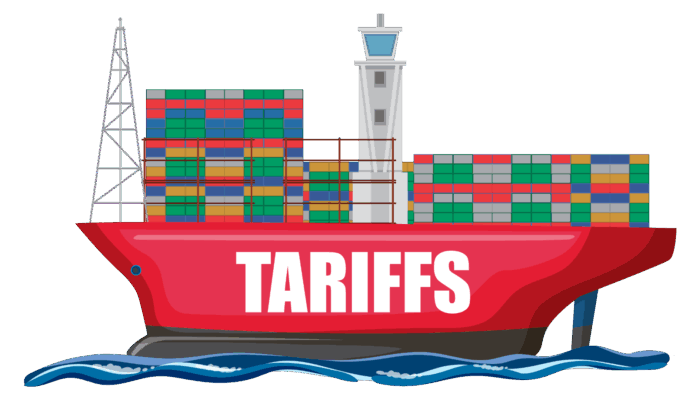Once upon a time, inventory was an inside job. Yes, retailers had to do their best to ensure the right products were in the right place at the right time. But shoppers didn’t expect you to tell them exactly what was on the shelves or in stockrooms and warehouses or the supply chain. And the dominance of cash-and-carry sales meant that “order orchestration” amounted to moving products from the stock rooms onto store shelves.
All that has changed in the age of omnichannel shopping. Today’s customers expect comprehensive inventory visibility—to know what products are available and where they are in the store for drive-to-store journeys. They also want multiple fulfillment options, especially when their first choice is not available. And they expect you to tell them exactly how long they will have to wait if an item is currently out of stock.
When it comes to inventory visibility and product availability, the stakes are high. An empty store shelf or failure to fulfill an online order doesn’t just mean a lost sale. It risks damaging the retailer’s brand and losing customers permanently. An XM Institute study found that:
- 35% of consumers decrease their spending after a single poor experience.
- 15% said a bad experience was enough to completely stop spending with the company.
- In the US alone, that represents as much as $840 billion in consumer spending.
That’s bad news for retailers who can’t support today’s complex customer journeys with unified, real-time inventory data and sophisticated order orchestration. But it’s great news for retailers with the right inventory visibility solutions in place. They are positioned to win a share of the hundreds of billions of dollars in business that their competitors are leaving on the table.
Unfortunately, there is no magic bullet that will unify omnichannel inventory data and activate it across key customer journeys. Each retailer has to embark on their own unique journey. However, there are five fundamental steps that every retailer needs to take on the road to inventory visibility nirvana.
1. Create a solid foundation for unified inventory visibility
Before you can tell your customers what products are available and where, you need to gain an accurate view of your inventory position.
This begins by gathering and synchronizing inventory data across multiple systems, from point of service (POS), merchandising systems, enterprise resource planning (ERP) and warehouse management systems (WMS) as well as partner systems.
This integrated data can then power visibility into where items are across your stores and fulfillment centers, including whether they are being processed or available for pickup or shipment. As your inventory visibility capabilities mature, you can begin to track products in real-time as they move through the supply chain, so you can provide accurate back-in-stock or delivery dates.
2. Give shoppers access to unified inventory visibility
More than half of consumers (52%) are willing to abandon a retailer after just one bad experience, according to a 2023 ZenDesk report. To prevent often disappointing roll-of-the-dice trips to physical stores—i.e. when customers go hoping (but not knowing) if you have what they want—you need a way to make up-to-date store inventory available to shoppers. Likewise, if they are shopping online, they want to know exactly what’s available and when they can expect to receive it.
3. Make sure you offer alternatives with powerful order orchestration
Sometimes, it is impossible to deliver on a shopper’s first choice for fulfillment. However, customers increasingly expect you to offer a viable alternative. With inventory visibility in place, you can send them to a different store, enable ordering online for store pickup, or have an in-store item shipped to their home.
To orchestrate all the data, systems, and teams required to deliver on these journeys efficiently, you need a solution that automates order management across all your systems and processes and ensures that you ship from the right location to both optimize routing and minimize the cost of fulfillment.
Unified inventory data and a modern order management solution enable you to deliver a range of fulfillment models and front-end experiences to achieve your customer promise, including:
- Ship-from-DC (warehouse)
- Ship-from-3PL (or manufacturer)
- Ship-from-store
- Ship-to-store (for in-store pickup)
- Ship-to-partner (pickup depot/carrier/post outlet/locker, etc.)
4. Don’t forget to orchestrate customer communications
In addition to managing exceptions, transferring stock, and managing split shipments and returns, you need a solution that will trigger both the manual processes required to fulfill orders as well as alerts and other communications with customers about their orders.
You want to ping them when they can expect their order—and again when it is ready for in-store pickup or delivery. For online orders, you need to tell them when an item will ship, when they can expect to receive it, and provide status updates or unexpected changes. Think of it as communication orchestration.
As you orchestrate communications, think about how your customer interacts with you. Do they prefer emails? Text message? Should you provide them with a range of choices? How frequent and how detailed do they expect your updates to be? Taking these elements into consideration when designing your communications can help boost overall customer satisfaction.
5. Take a phased, strategic approach
So where should you start? There are three things you should not do:
- Don’t try to tackle every journey on your wish list. It’s impossible to succeed at all of them all at once. Pick one or two and get it right, then build from there.
- Don’t copy a competitor’s strategy. Their customer base may have a very different set of preferences. Make sure your strategy matches your customer’s wants and needs.
- Don’t worry about the latest, greatest digital fad. It might not truly serve your customers, anyway.
Then, retailers should start by focusing on understanding their customer’s preferred omnichannel journeys. For example, are they frequent Amazon customers? Or do they like to research online before making their purchase in-store? If so, you may not need real-time inventory accuracy everywhere, at least not at first. Instead, you probably want to concentrate on store inventory and expand from there.
These are just a few examples of the ways to plot a successful strategy for your unique business. Solutions such as Fluent Commerce’s Omnichannel Single View of Inventory and Fluent Order Management serve as a great foundation to deliver inventory visibility and omnichannel journeys. They become more powerful when combined with Logic’s Unified Commerce Accelerator, which orchestrates customer, order, catalog, price, and inventory data across these and other systems.
But to gain maximum value from these solutions, you also need to ground your approach in a deep understanding of your customer’s specific needs and preferences to tailor your solutions accordingly.
Each organization is different. For a personalized consultation, please reach out to Xavier Mougeot at logicinfo.com.
About the author: Xavier Mougeot is the Global Managing Director for Digital at Logic, the world’s largest retail-focused consultancy. Xavier has led commerce strategies and customer experiences for companies including Rogers Communications, Stanley Black & Decker, General Motors, Mary Kay, AT&T, Sobeys, and Pfizer.



